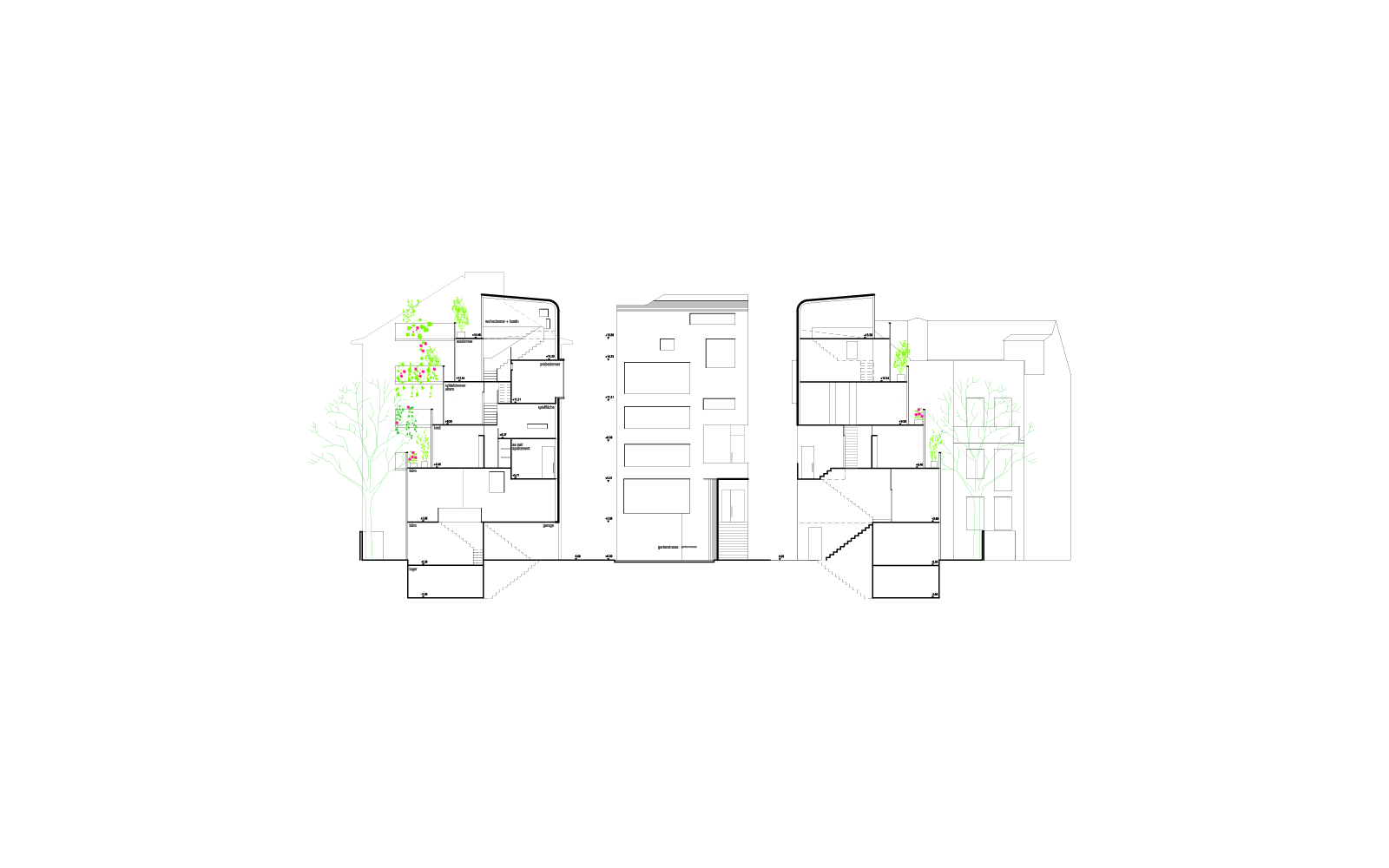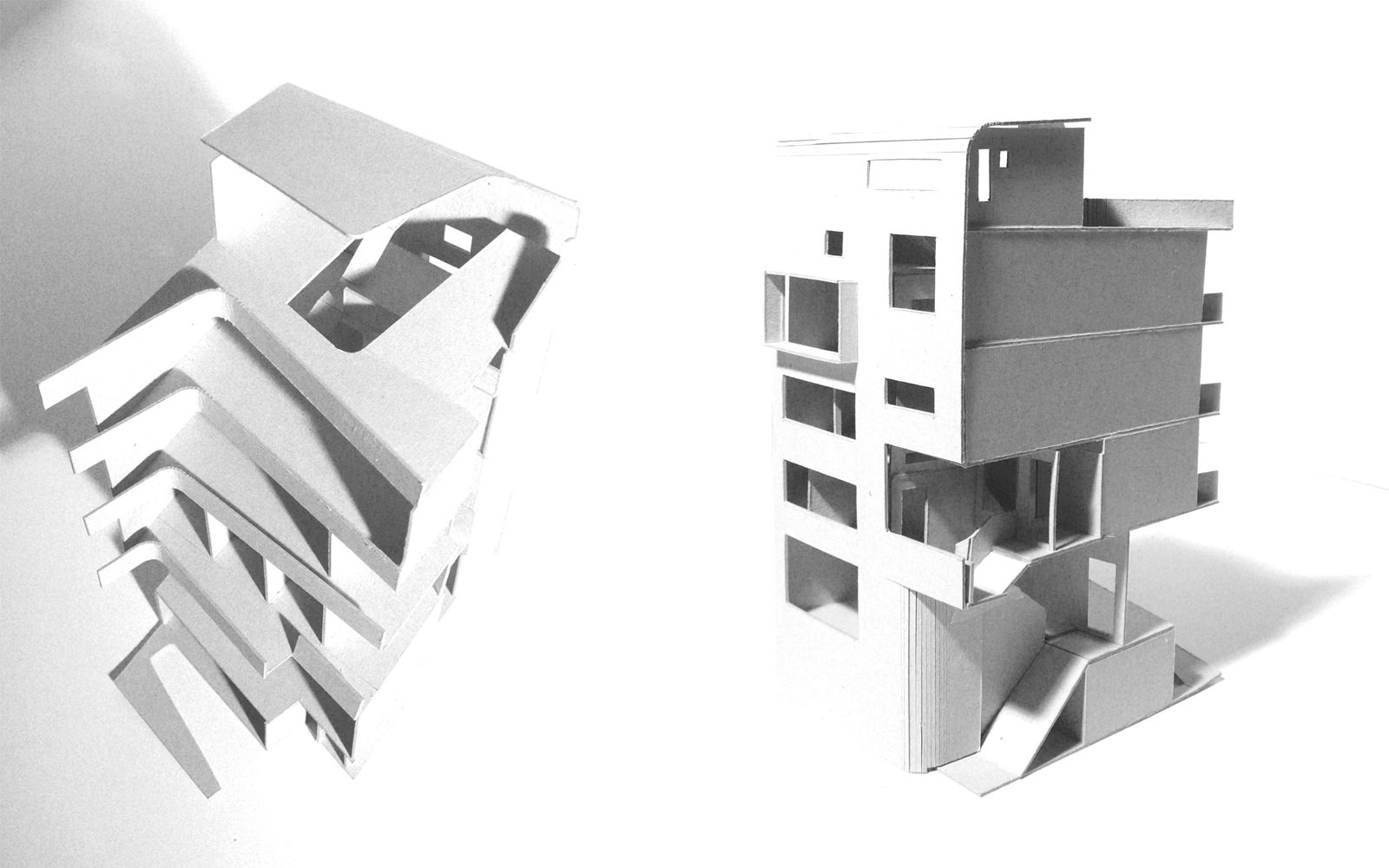

Haus B, Düsseldorf
Die Bebauung der kleinen Parzelle in unmittelbarer Nachbarschaft zum Hofgarten ist aufgrund der nachbarschaftlichen Enge und unter Berücksichtigung der Abstandsflächen mit konventioneller Entwurfsmethodik nicht zu lösen. Anders kann die nach dem 2. Weltkrieg umbaute Baulücke in dieser attraktiven Lage von Düsseldorf nicht gedeutet werden.
Unser Entwurf verschränkt verschiedene Nutzungseinheiten ineinander, diese Art der Vernetzung ermöglicht das flexible Zusammenschalten einzelner Funktionen und gewährleistet die Anpassung an wandelnde Nutzeransprüche.
Die Transformation des Treppenraumes in einzelne Situationen erlaubt die spiralförmige Anlagerung der Nutzungen, das Haus funktioniert als großzügiges Bürgerhaus mit verschiedenen Salons und als kleinparzellierter Gewerbe- und Wohnort gleichermaßen.
The constraints imposed on a development of the small parcel of land immediately adjacent to the courtyard garden by the closeness of the neighbouring buildings and the incorporation of necessary setbacks call for unconventional design methods. Outside-the-box planning is required for this infill building plot surrounded by buildings erected after World War II in a much sought-after part of Düsseldorf.
The conceptual design provides for the interlacing of different types of usable space to allow flexible interconnection of separate functions and easy adaptation to ever-evolving use requirements.
Transformation of the stairwell into several individual situations permits the spiral positioning of usable areas. As a result, the building can be used as either a generously-sized residential house comprising several salons or a mixed-use, parcelled-up space to both live and work in.
Information
Bauherr: privat
Architektenleistungen: LP 1-3
Standort: Düsseldorf Pempelfort
2009-2010